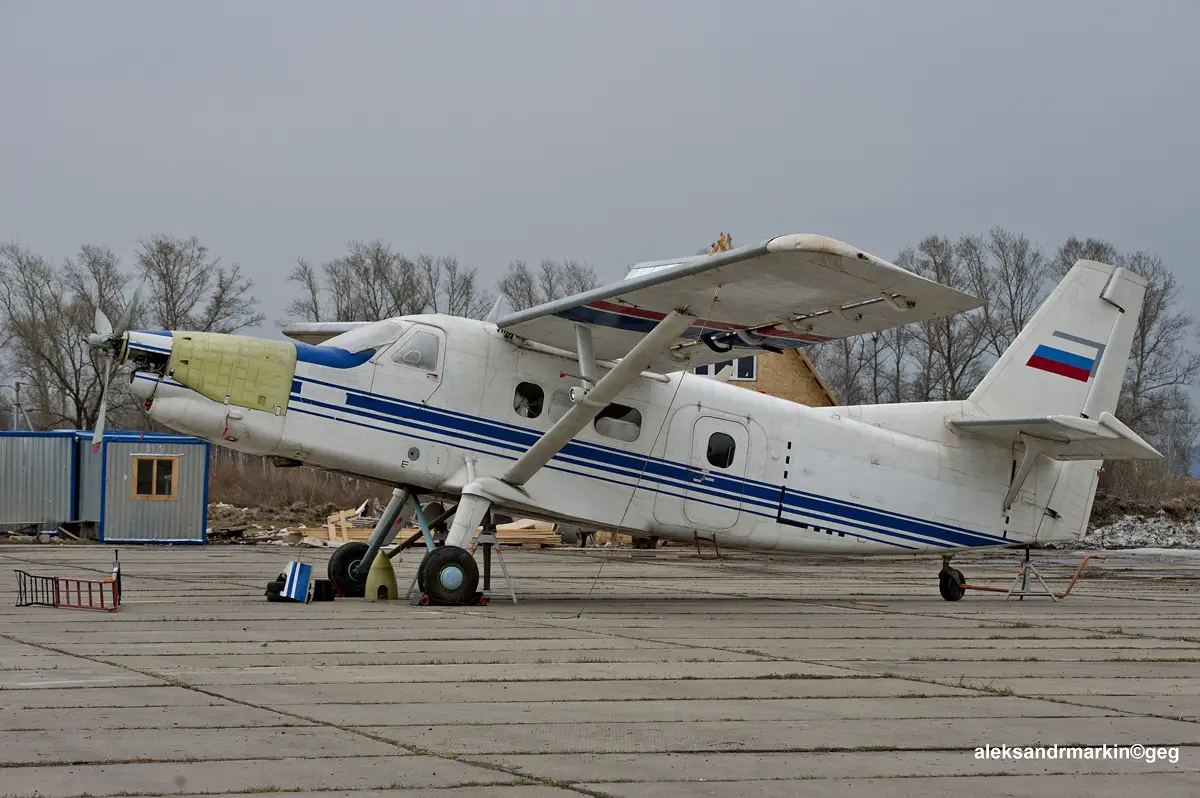The T-101 “Grach,” which shared remarkable design similarities with the later LMS-901 Baikal, emerged from the Russian aviation industry in the early 1990s. Rox-Aero initiated the aircraft’s development in 1992 and completed its construction at the Moscow Aviation Production Association (MAPO) by the end of 1993. The Lukhovitsy Aircraft Plant conducted the first phase of flight testing, initiating an ambitious aviation project.
The cockpit design prioritized crew comfort and functionality. Positioned above the firewall, it accommodated two crew members in adjustable seats. Each crew position had its own door, equipped with emergency release mechanisms for quick evacuation if needed. The design included large windshields and door windows that provided excellent visibility. Behind the cockpit, a spacious cargo passenger compartment offered versatile usage options.
The wing design was particularly sophisticated. The straight, braced wing featured a four-section flap system and ailerons, with the left aileron incorporating an electrically driven trim tab. Two upper horizontal points attached the wing to the fuselage, and fairings aesthetically and aerodynamically enclosed the bracing struts. The wing’s internal structure utilized a two-spar construction, with integral fuel tanks integrated into the root section. The tailplane design included a stabilizer and a two-section elevator, connected by a tube and featuring electric trim tabs.
The aircraft specifically engineered its landing gear for soft-field operations, incorporating a hydraulic braking system. The flight control systems combined different technologies: the elevator and rudder used cable controls, while the ailerons employed a combination of mechanical systems. Electric drives managed both flap extension and trim control. Cable-operated systems, centralized in a single console between the pilots, achieved engine and propeller control.
The T-101’s systems were comprehensive and modern. The de-icing system incorporated three distinct methods: air heating for the windshield, oil heating for engine intakes, and electrical heating for propeller blades and pitot tubes. Plans were also in place to extend heated air protection to the wing’s leading edges, stabilizer, and fin. The fire protection system was equally sophisticated, featuring fire detection sensors and a freon-based fire suppression system in the engine compartment, activated by pyrotechnic cartridges. Air conditioning systems equipped both the cockpit and the passenger compartment.
The avionics suite was particularly impressive for its time. The aircraft featured a pod-mounted radar system and comprehensive navigation equipment that enabled safe operation in both simple and challenging weather conditions, over water and featureless terrain. The navigation package included satellite navigation capabilities, an automatic radio compass, a radar altimeter, a directional gyro system, and weather radar. The communication systems spanned UHF, VHF, and HF frequencies, ensuring reliable contact across all operational ranges and altitudes.
Test pilot Viktor Vasilyevich Zabolotsky’s assessment after initial testing was overwhelmingly positive. His flight data revealed impressive performance metrics: takeoff speeds of 80-90 km/h, a 10.5-minute climb time to 3,000 meters, and a cruising speed of 240 km/h at 0.9 nominal power. Landing characteristics were equally notable, with touchdown speeds around 70 km/h and effective ground handling enhanced by propeller reverse thrust capability.
Given the limited infrastructure in the North and East of Russia, the aircraft proved particularly well-suited for operations. Its performance metrics were remarkable—despite having a wing area 40% smaller than the An-2, it achieved a lower liftoff speed of 20 km/h. The TVD-10B engine’s fuel efficiency was exceptional, consuming kerosene at half the cost of aviation gasoline, with even greater cost benefits in northern regions. For perspective, while a Mi-8 helicopter consumed 1,000 liters per hour, the T-101 could operate for four hours on the same fuel quantity.
The T-101’s development spawned several variants. Designed for flight schools, the T-105 featured a nosewheel instead of a tailwheel. Plans were developed for float- and ski-equipped versions to expand operational capabilities. More ambitious derivatives included the T-108, which was to feature two 650-horsepower wing-mounted engines and the amphibious T-130 “Fregat” with twin 760-horsepower powerplants.
The aircraft garnered interest from unexpected quarters. Military units, particularly airborne forces and border troops, saw it as an “aviation jeep,” while renowned ophthalmologist Svyatoslav Fedorov envisioned its potential as a flying eye clinic. The aircraft’s production costs were 2-3 times lower than comparable aircraft in its class, making it particularly attractive for export markets, especially in African and Asian countries. To facilitate international sales, the aircraft underwent certification processes for both Russian and U.S. FAR-23 airworthiness standards.
Despite its promising design and capabilities, the T-101’s story ultimately reflected the harsh economic realities of post-Soviet Russia. After entering initial production, the project faced significant headwinds as potential airline customers in the 1990s lacked the necessary funds to purchase new aircraft. In an attempt to salvage the program, OOO “ASC” (ASA-Aerodesign) proposed a modernization plan, intending to purchase 20 aircraft for deep modification. Their ambitious proposal included replacing the original TVD-10B engine with either an American Pratt & Whitney PT6A-65B or a Honeywell TPE331 powerplant. However, these plans, like many aviation projects of that era, never materialized, and the proposed manufacturing facility never saw construction. Today, the few remaining T-101 aircraft stand as silent reminders of a promising design that fell victim to the economic challenges of its time, joining countless other innovative Russian aircraft projects that never achieved their full potential.
Official Website of Youtube Channel – Altitude Addicts
